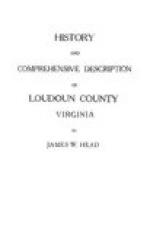The agricultural methods in use throughout the County are very uniform, notwithstanding the fact that there are a comparatively large number of soil types in the area.
A system of general farming, with few variations, is practiced, although some of the soils are much better adapted to the purpose than are other soils of the area. The system of rotation practiced consists of drilling in wheat and timothy seed together on the corn stubble in the fall, and sowing clover in the following spring. The wheat is harvested in the early summer, leaving the timothy and clover, which, after obtaining a good growth, is grazed or cut the next year for hay. This land is then plowed, and the following spring corn is planted, to be followed by wheat again the next fall, thus completing the rotation.
Loudoun’s gently sweeping hills and broad valleys support great herds of cattle and flocks of sheep, and yield immense crops of corn, wheat, oats, and other cereals. More corn is produced and probably more live stock marketed by Loudoun than by any other of the 100 counties of Virginia.
The wheat is either sold for shipment or ground into flour by the many mills of the County, which mainly supply the home demand. The surplus is shipped chiefly to Washington and Baltimore. The major portion of the corn is used locally for feeding beef cattle, dairy stock, and work animals. Hay is shipped in large quantities and the rye, oats, and buckwheat are mostly consumed at home. Considerable pork is fattened in the County and many hundred head of cattle are annually grazed to supply the Washington and Baltimore markets.
A Government statistician was responsible for the following statement, based, no doubt, on the creditable showing made by Loudoun in the census of 1880: “Taken as a whole, probably the best farming in the State is now done in this (Loudoun) County.” Of Virginia counties, it stood, at that time, first in the production of corn, butter, eggs, and wool, and in numbers of milch cows and sheep, and second only to Fauquier in the number of its stock cattle.
The breeding of superior stock and horses is an important branch of the County’s agricultural activities. A contributor to Country Life in America, in an article entitled “Country Life in Loudoun County,” says of it: “And the raising of animals is here not the fad of men of wealth who would play at country life. It is a serious business, productive of actual profit and a deep-seated satisfaction as continuous and well grounded as I have ever seen taken by men in their vocation.”
The wealthier class of citizens of course specialize, each according to his personal choice. One, with 1,500 acres, all told, does a large dairying business and raises registered Dorset horn sheep, large white Yorkshire swine, registered Guernsey cattle, and Percheron horses. Another, with a like acreage, specializes in hackneys. A third, on his 300 or more acres, raises thoroughbreds and Irish hunters. A fourth, with 1,000 acres, fattens cattle for market and breeds Percheron horses, thoroughbreds, hackneys, and cattle. A fifth, owning several thousand acres, fattens cattle for export. A half dozen others, on farms ranging from 200 to 1,000 acres, raise thoroughbreds or draft animals. These are the specialties; on all the farms mentioned the owners have their secondary interests.




